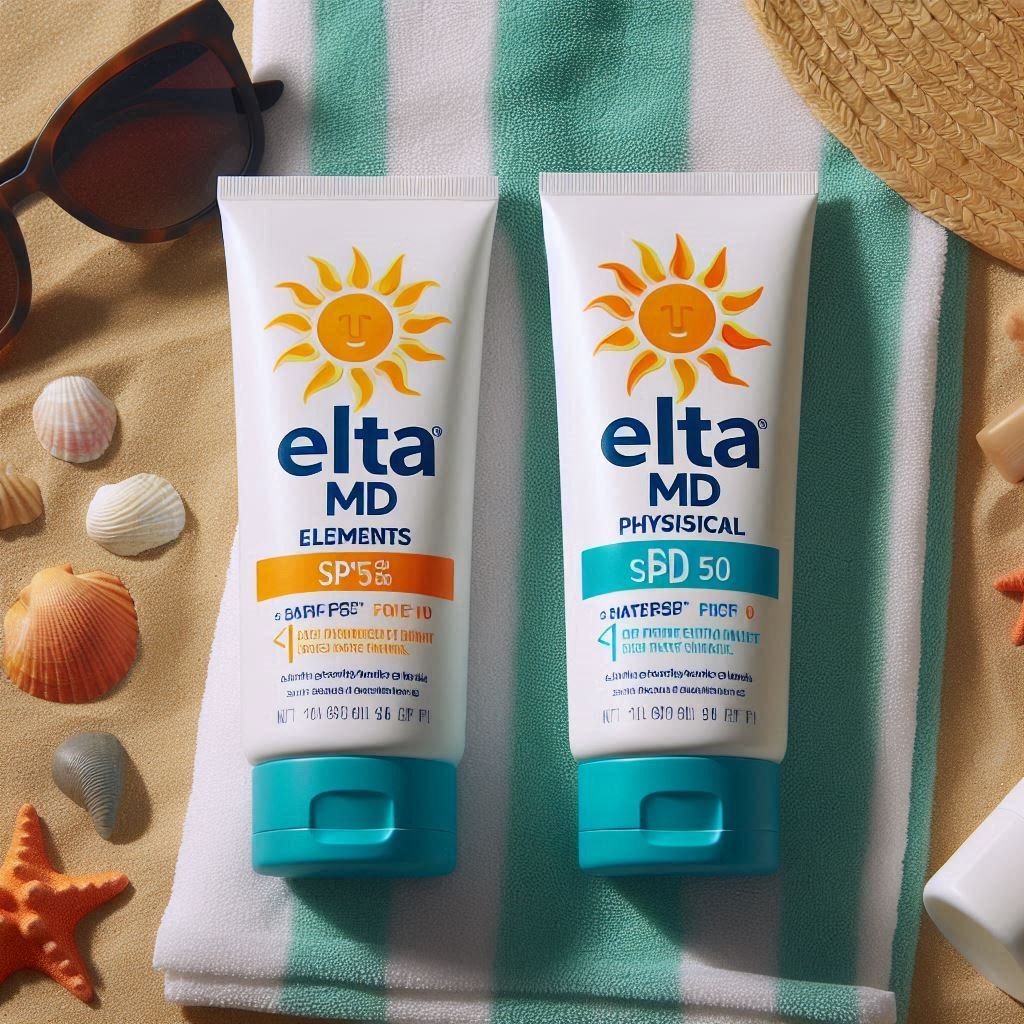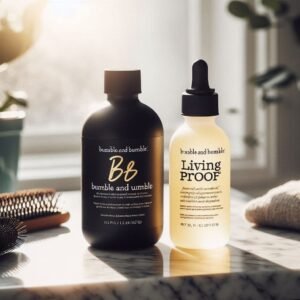Elta MD Elements Vs Physical – When it comes to choosing the right sunscreen, you’re likely faced with a multitude of options. Two popular choices, Elta MD Elements and Physical, seem to dominate the market. But what sets them apart? You might be wondering which one is right for your skin type, lifestyle, and specific needs.
As you weigh the pros and cons, you’re probably asking yourself: do chemical active ingredients provide better protection, or is a physical barrier the way to go? The answer lies in understanding the unique benefits and advantages of each – and that’s exactly what we’re about to explore.
A Quick Overview
- Elta MD Elements uses chemical absorption, providing deeper skin penetration and more effective protection against UV radiation.
- Physical sunscreens, like Elta MD Physical, work on the skin’s surface, forming a protective barrier that scatters and reflects UV rays.
- Elta MD Elements is better suited for sensitive skin, while Elta MD Physical is ideal for acne-prone skin and outdoor enthusiasts.
- Both Elta MD Elements and Physical offer broad-spectrum protection, but Physical has a higher SPF 41 option, while Elements offers a wider range of SPF choices.
- Elta MD Physical provides superior water-resistance, making it ideal for athletes and outdoor enthusiasts, whereas Elements has limited water-resistance.
Understanding Chemical Sunscreens

Chemical sunscreens contain active ingredients that absorb ultraviolet (UV) radiation, converting it into heat that’s then released from the skin.
Initially, chemical sunscreens were developed to provide broad-spectrum protection against UVA and UVB rays.
Despite their effectiveness, chemical myths have led to misconceptions about their safety and efficacy. One common myth is that chemical sunscreens are less effective than physical sunscreens, which isn’t entirely true.
In reality, chemical sunscreens have undergone significant improvements, offering better protection and cosmetic elegance.
Elements Ingredients Breakdown
Breaking down the ingredients of Elta MD Elements reveals a carefully crafted blend of antioxidants, moisturizers, and broad-spectrum sunscreens that work synergistically to provide exceptional protection and skin benefits.
As you excavate further into the formula, you’ll notice the attention to detail in the ingredient sourcing, ensuring the highest quality and efficacy.
Antioxidant-rich extracts, such as green tea and pomegranate, combat environmental stressors and promote healthy skin.
Hydrating moisturizers, like hyaluronic acid and glycerin, provide long-lasting hydration and enhance the skin’s natural barrier function.
Broad-spectrum sunscreens, including zinc oxide and octinoxate, offer superior protection against UVA and UVB rays.
Nourishing vitamins, such as vitamins C and E, support the skin’s natural defenses and promote a radiant glow.
These carefully selected ingredients work together to provide exceptional moisturizing capabilities and protection, making Elta MD Elements an excellent choice for your skin.
Benefits of Chemical Absorption
By leveraging chemical absorption, Elta MD Elements’ broad-spectrum sunscreens can penetrate deeper into the skin, providing more effective protection against UV radiation.
As you apply these sunscreens, the chemical active ingredients are quickly absorbed into your skin, allowing them to neutralize harmful UV rays more efficiently.
This deep skin penetration also enables the sunscreen to work in harmony with your skin’s natural pH, ensuring that your skin remains healthy and balanced.
By doing so, you can enjoy prolonged protection against skin damage and premature aging, while also experiencing a more comfortable and non-greasy wear.
With Elta MD Elements, you can trust that your skin is receiving the best possible defense against the sun’s harmful effects.
Physical Sunscreen Explained
Physical sunscreens, like zinc oxide and titanium dioxide, work on the skin’s surface, forming a protective barrier that scatters and reflects UV rays, rather than absorbing them like chemical active ingredients.
They provide several benefits, including:
Immediate protection: Physical sunscreens provide instant protection as soon as you apply them, unlike chemical sunscreens which take around 20 minutes to kick in.
No absorption: Physical sunscreens don’t absorb into your skin, making them a great option for sensitive skin types.
Reapply often: Physical sunscreens need to be reapplied regularly, as they can be rubbed off or washed away.
Don’t believe the SPF myths: Just because a physical sunscreen has a high SPF doesn’t mean it’s more effective. Look for broad-spectrum protection instead.
As you explore the world of sunscreen types, crucial to comprehend the differences between physical and chemical sunscreens to make an informed decision about your skin care.
Physical Ingredients and Formula
As you examine the Physical sunscreen, you’ll want to scrutinize the active ingredients and their concentrations to understand how they work together to provide protection.
You’ll notice that zinc oxide is the primary active ingredient, responsible for creating a physical barrier on the skin’s surface.
Active Ingredients Breakdown
Elta MD Elements and Physical sunscreens boast distinct active ingredient profiles, with each formula carefully crafted to provide unique benefits and advantages.
When it comes to skin chemistry, understanding the synergy between ingredients is pivotal.
Elta MD Elements: Zinc oxide (10.5%), octinoxate (7.5%), and octocrylene (2.5%) work together to provide broad-spectrum protection against UVA and UVB rays.
Elta MD Physical: Zinc oxide (9.0%) and titanium dioxide (7.0%) form a powerful duo, offering a physical barrier against the sun’s harmful rays.
Common ingredients: Both formulas feature antioxidants like vitamin E and ferulic acid to combat free radicals and soothe the skin.
Key difference: Physical’s higher concentration of zinc oxide provides enhanced protection against UVA rays, while Elements’ blend of octinoxate and octocrylene offers added protection against UVB rays.
Formula Composition Analysis
Delving into the formula composition of Elta MD Elements and Physical sunscreens reveals distinct differences in their physical ingredients and formula.
You’ll notice that Elta MD Elements features a unique blend of antioxidants and moisturizers, which work together to provide exceptional skin protection.
On the other hand, Physical sunscreens have a simpler, more straightforward formula that relies on zinc oxide for broad-spectrum protection.
When examining the molecular structure of these ingredients, you’ll find that Physical’s zinc oxide has a larger particle size, which affects its spreadability and skin feel.
Additionally, the pH levels of these sunscreens differ, with Elements having a more acidic pH and Physical having a more alkaline pH.
Understanding these differences is vital in determining which sunscreen best suits your skin type and needs.
Advantages of Mineral Barriers
As you explore the benefits of mineral barriers, you’ll discover they offer extensive protection against the full range of UVA and UVB rays, providing you with broad spectrum defense.
Additionally, these barriers boast environmentally friendly formulas that won’t harm the planet.
Moreover, they’re known for their soothing skin properties, making them an excellent choice for sensitive skin types.
Broad Spectrum Protection
Mineral barriers, like zinc oxide and titanium dioxide, offer unparalleled broad-spectrum protection by creating a physical shield that scatters and reflects UV rays, safeguarding your skin from the entire electromagnetic spectrum.
You’re likely aware of the importance of protecting your skin from UV rays, but do you know exactly how they work?
UV rays aren’t just limited to UVA and UVB, but also include UVC, visible light, and infrared radiation.
UVA rays penetrate deep into your skin, causing premature aging and wrinkles.
UVB rays are the primary cause of sunburn and play a key role in skin cancer development.
UVC rays are the most energetic, but are mostly absorbed by the Earth’s atmosphere.
Visible light and infrared radiation can also cause skin damage and hyperpigmentation.
Environmentally Friendly Formula
Mineral barriers like zinc oxide and titanium dioxide aren’t only effective at protecting your skin but also gentle on the environment, thanks to their non-chemical, eco-friendly composition.
As someone who prioritizes eco consciousness, you’ll appreciate that these ingredients are derived from natural sources, reducing the carbon footprint of your skincare routine.
By choosing mineral barriers, you’re supporting green technology that promotes sustainability. Unlike chemical-based active ingredients, mineral barriers don’t harm aquatic life or contaminate soil and water.
You can feel good about protecting your skin while also doing your part for the planet. With Elta MD Elements, you can have peace of mind knowing that your sunscreen isn’t only effective but also environmentally responsible.
Soothing Skin Properties
As you explore the advantages of mineral barriers, you’ll discover their exceptional soothing skin properties.
Two key benefits of mineral barriers like zinc oxide and titanium dioxide are their anti-inflammatory and antioxidant properties, which work synergistically to calm and soothe sensitive skin.
Reduce redness: Mineral barriers help to minimize redness and irritation, creating a more even-toned complexion.
Soothe irritation: Their anti-inflammatory properties alleviate skin irritation, making them ideal for sensitive skin types.
Neutralize free radicals: Antioxidant properties combat free radicals, preventing damage and promoting healthy skin.
Hydrate the skin: Mineral barriers help lock in moisture, leaving your skin feeling soft, supple, and comforted.
Skin Type Suitability Comparison
Elta MD Elements and Physical sunscreens cater to different skin types, with Elements being more tolerant of sensitive skin and Physical providing a gentler, non-comedogenic option for acne-prone skin.
If you have sensitive skin, you’ll appreciate Elements’ gentle, fragrance-free formula that reduces irritation.
On the other hand, Physical’s lightweight, oil-free texture makes it an excellent choice for acne-prone skin, as it won’t clog pores or exacerbate breakouts.
You can trust that both options are rigorously tested to verify they meet the highest standards for skin health.
SPF and Water Resistance
When choosing between Elta MD Elements and Physical, you’ll want to ponder the SPF ratings and water resistance levels of each product.
You’ll find that both products have different SPF options, but which one provides adequate protection for your skin?
As you compare the water resistance levels, you’ll need to think about how often you plan to wear the sunscreen in wet conditions and how long you need it to last.
SPF Ratings Compared
You’re likely familiar with the importance of SPF ratings in sunscreens, but how do the Elta MD Elements and Physical sunscreens stack up against each other in terms of SPF and water resistance?
Let’s debunk some common sunscreen myths and SPF myths: it’s not just about the highest number.
Elta MD Elements offers broad-spectrum protection with SPF 30, 40, and 50 options.
Elta MD Physical provides broad-spectrum protection with SPF 30 and 41 options.
Key difference: Physical sunscreen has a higher SPF 41 option, but Elements offers a wider range of SPF choices.
What it means for you: Both lines offer reliable protection, but you may prefer Elements for more SPF options or Physical for a higher maximum SPF.
Now that we’ve compared SPF ratings, let’s plunge into water resistance levels in our next section.
Water Resistance Levels
Water resistance levels vary substantially between the Elta MD Elements and Physical sunscreens, with key differences in how they withstand water and sweat.
As someone who enjoys water sports or frequent pool days, you’ll want to know that Elta MD Elements offers a higher level of water resistance, with a rating of 80 minutes.
This means it can withstand extended periods of water exposure without losing its SPF protection.
In contrast, Physical sunscreens typically have a lower water resistance rating, typically around 40 minutes.
This is still sufficient for casual water activities, but may not be suitable for more intense water sports or prolonged pool testing.
Consider your lifestyle and water exposure when choosing between these two sunscreens.
Durability in Water
Beyond the initial water resistance ratings, it is vital to examine how Elta MD Elements and Physical sunscreens maintain their SPF protection during prolonged water exposure. You want to know if your sunscreen can keep up with your aquatic activities. Water testing is essential to evaluate the aquatic longevity of these products.
80-minute water immersion: Elta MD Elements retains its SPF 50 protection, while Physical sunscreen maintains its SPF 20.
Prolonged swimming and sweating: Both sunscreens experience some SPF degradation, but Elta MD Elements fares better.
Water aerobics and high-impact activities: Physical sunscreen’s SPF 20 drops to 10, while Elta MD Elements’ SPF 50 remains relatively stable.
Post-water exposure reapplication: Both sunscreens require reapplication to maintain ideal protection.
When it comes to durability in water, Elta MD Elements takes the lead, ensuring your skin stays protected even during extended water activities.
Application and Texture Differences
When applying Elta MD Elements and Physical sunscreens, you’ll notice distinct texture differences, with Elements boasting a lightweight, whipped consistency that glides on effortlessly, whereas Physical has a thicker, more substantial feel.
This disparity affects the overall application experience. Elements spreads easily, creating a silky finish that won’t clog pores.
It’s ideal for daily use, especially under makeup.
In contrast, Physical’s thicker consistency requires more effort to blend, but it provides a smooth layering that’s perfect for outdoor activities or sensitive skin.
Understanding these texture differences is vital in choosing the right sunscreen for your needs.
Potential Irritation and Reactions
You may wonder whether these distinct textures also impact the potential for irritation and reactions, as your skin responds differently to the unique formulations of Elta MD Elements and Physical sunscreens.
As it turns out, both products are generally well-tolerated, but there are some key differences to weigh.
Skin sensitivity: Elta MD Elements is more likely to cause stinging or burning sensations in sensitive skin types, while Physical is generally gentler.
Allergic responses: Physical sunscreens are more likely to trigger allergic responses due to the presence of active ingredients like zinc oxide and titanium dioxide.
Comedogenic potential: Elta MD Elements has a lower risk of clogging pores, making it a better choice for acne-prone skin.
Fragrance-free options: Both products offer fragrance-free options, which can reduce the risk of irritation and allergic responses.
Price and Availability Comparison
They’ll likely factor into your purchasing decision: the prices and availability of Elta MD Elements and Physical sunscreens.
You’ll find that both products are generally priced similarly, with Elements ranging from $25 to $40 and Physical from $20 to $35, depending on the size and type.
When it comes to availability, both brands are widely available at online retailers like Amazon, Dermstore, and Skinstore.
If you’re looking to build brand loyalty, you may find that Physical is more accessible at brick-and-mortar stores, while Elements is often exclusive to online retailers.
However, both brands offer a strong online presence, making it easy to purchase and restock your favorite sunscreen.
Making the Right Choice for You
Two key factors will ultimately guide your decision between Elta MD Elements and Physical sunscreens: your skin type and personal preferences.
When considering your skin type, think about your specific skin concerns. Do you struggle with acne, hyperpigmentation, or rosacea? If so, Physical sunscreen might be the better choice, as it provides a physical barrier against the sun’s rays without clogging pores or exacerbating skin issues.
Skin Concerns: If you have sensitive skin or skin conditions, Physical sunscreen might be a better fit.
Personal Preference: If you prefer a lightweight, non-greasy sunscreen, Elta MD Elements might be the way to go.
Lifestyle: If you’re an athlete or outdoor enthusiast, Physical sunscreen’s water-resistance might be a key factor.
Aesthetics: If you dislike the white cast often associated with physical sunscreens, Elta MD Elements might be a better choice.
Frequently Asked Questions
Can I Use Elta MD Elements on Sensitive Skin Around My Eyes?
When using Elta MD Elements around your sensitive eye area, be cautious of potential eye irritation and skin reactivity. You’ll want to patch test, start with a small amount, and monitor for any adverse reactions to guarantee a comfortable, safe experience.
Is Elta MD Physical Sunscreen Suitable for Children and Babies?
When considering sunscreen for your little ones, you’ll want to choose a gentle, pediatrician-recommended option. Elta MD Physical sunscreen is suitable for most baby skin types, but always consult with your pediatrician to verify the best choice for your child’s sensitive skin.
Can I Mix Elta MD Elements With Moisturizer or Foundation?
When incorporating Elta MD Elements into your daily routine, you can mix it with moisturizer or foundation, but be cautious of your skin type, as some combinations may cause pilling or uneven texture, so test and adjust accordingly.
Does Elta MD Elements Expire, and How Do I Store It?
You’ll want to check the expiration date on your Elta MD Elements, as it typically lasts 2-3 years from manufacture. To maintain its shelf life, store it in a cool, dry place, away from direct sunlight to guarantee maximum product longevity.
Is Elta MD Physical Sunscreen Reef-Safe and Eco-Friendly?
When choosing a sunscreen, you’ll want to opt for reef-safe and eco-friendly options, avoiding chemical alternatives that harm marine life. As you prioritize ocean conservation, look for sunscreens with mineral active ingredients, like zinc oxide, to guarantee a guilt-free glow.
Conclusion
You’ve now grasped the fundamental differences between Elta MD Elements and Physical sunscreens.
Elements’ chemical active ingredients provide superior UV protection, tolerating sensitive skin, while Physical’s zinc oxide and titanium dioxide create a barrier, suiting acne-prone skin and athletes.
Consider your skin type, lifestyle, and needs when choosing between these two trusted options.
With this exhaustive guide, you’re equipped to make an informed decision, ensuring ideal sun protection for your unique situation.




